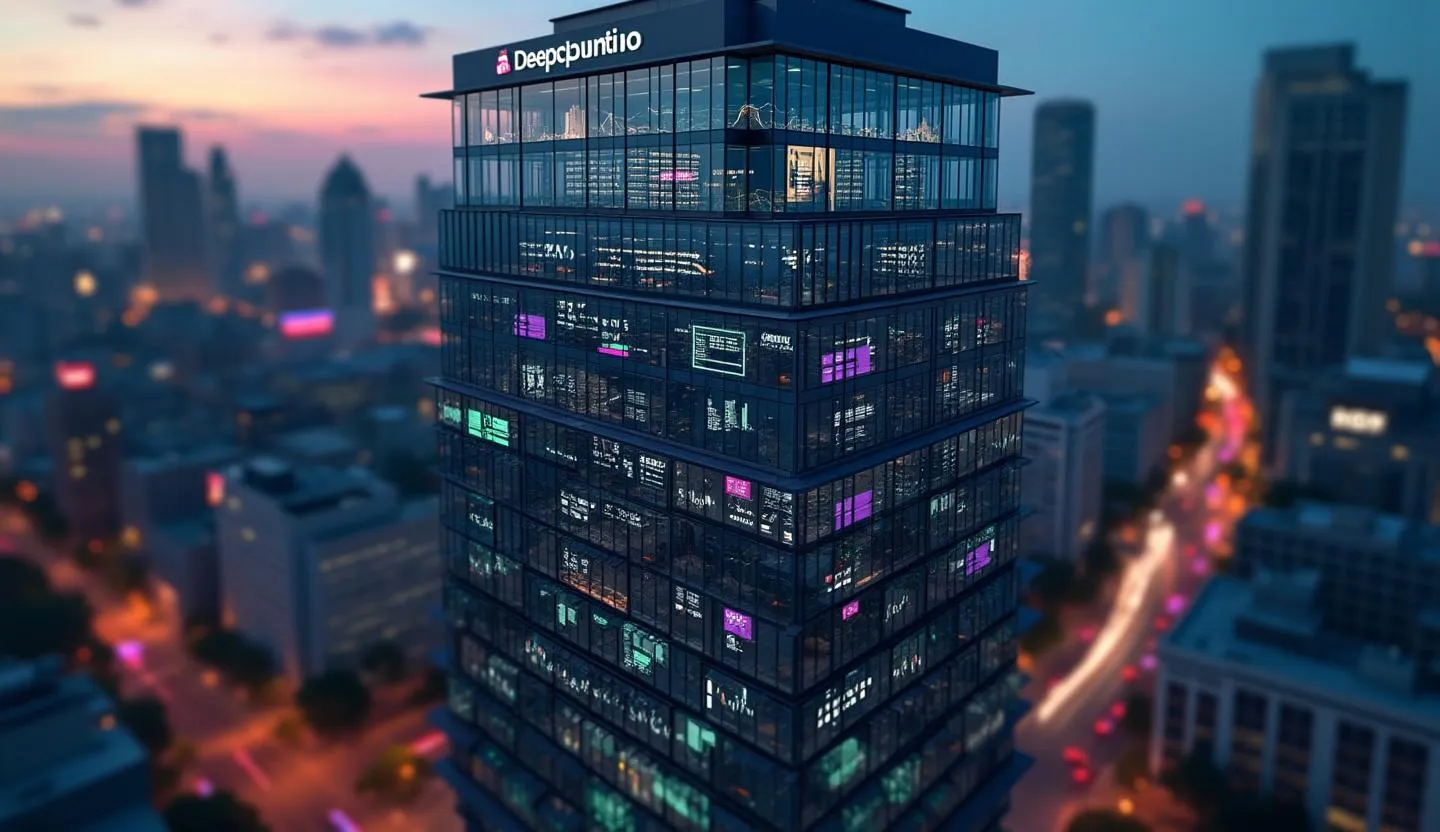Argus Cools on Restaurant Brands International: What Investors Need to Know Now
Restaurant Brands International (QSR), the global powerhouse behind Burger King, Tim Hortons, Popeyes, and Firehouse Subs, just received a notable analyst downgrade. Argus, a respected independent research firm, shifted its rating from Buy to Hold, signaling a significant change in sentiment for the quick-service restaurant giant. This move comes at a time when Restaurant Brands is navigating shifting consumer trends, inflationary pressures, and mixed financial results. For investors, analyst downgrades like this are critical—they often foreshadow deeper industry shifts or company-specific headwinds and can influence institutional flows.
Key Takeaways
Argus shifts QSR rating from Buy to Hold, reflecting growing caution.
Stock has stagnated near $65 after a recent earnings miss and rising expenses.
Recent headlines highlight mixed performance: sales rose, but earnings lagged and costs are up.
Technical indicators suggest QSR is approaching oversold territory (RSI ~31), but no clear reversal yet.
No updated price target from Argus, suggesting limited near-term upside and heightened uncertainty.
Analyst Downgrade in Context: Argus’s Influence and the Current Market Landscape
Argus is a well-established, independent equity research firm with decades of experience covering major global equities. Known for its rigorous, fundamental-driven analysis and focus on risk-adjusted returns, Argus’s changes often carry weight with institutional investors and retail traders. Their latest move from Buy to Hold does not come with a revised price target, but the absence itself is telling: it implies Argus sees a lack of compelling catalysts to drive outperformance in the near term.
"Hold is not a bearish call; rather, it signals uncertainty and a wait-and-see approach, especially in the face of macro challenges and mixed execution." Deepstreet
Argus’s shift aligns with recent headlines and financial data suggesting QSR’s growth trajectory is under pressure.
Restaurant Brands: Operating Model and Recent Performance
Restaurant Brands International is one of the world’s largest quick-service restaurant companies, with over 29,000 locations across more than 100 countries. Its diversified brand portfolio targets a global consumer base, with strong North American roots and a growing international footprint. The company’s business model focuses on:
Franchise-Driven Revenue: Most locations are franchised, providing steady royalties and minimizing operational risk.
Global Scale: Multi-brand strategy allows for cross-market synergies and supply chain leverage.
Innovation: Menu innovation and digital ordering initiatives are key to driving traffic and average ticket size.
However, the latest financial results show a company at a crossroads. While top-line revenue increased—driven mainly by Tim Hortons and international units—profitability is being squeezed by rising expenses and lackluster results from core banners like Burger King and Popeyes.
Recent Financial Snapshot
Q2 Revenue: $2.41 billion (growth year-over-year, led by Tim Hortons and International)
Earnings: Missed consensus estimates as reported by Zacks
Profitability: Pressured by rising wages, input costs, and increased promotional spending
Recent news flow underscores these challenges:
"Restaurant Brands Q2 Earnings Miss Estimates, Rise Y/Y, Stock Down" — Zacks
"Burger King, Popeyes parent company RBI suffers mass earnings fall as expenses continue to rise" — New York Post
"Here Are Billionaire Bill Ackman's 5 Biggest Stock Holdings" — The Motley Fool
Stock Price Performance: Signs of Fatigue
Reviewing one-year price data reveals:
Metric | Value |
|---|---|
Current Price | $65.21 |
52-Week High | $74.09 |
52-Week Low | $58.71 |
VWAP (12mo) | $66.95 |
Recent RSI | 30.7 |
20-Day EMA | $66.85 |
20-Day SMA | $67.74 |
Average Daily Volume | 2.13M |
Trend: The stock has drifted lower from its highs, now hovering just above the lower Bollinger Band ($63.33), reflecting mounting caution.
Volatility: Average daily volatility is 1.38%, with the lowest volume day just recorded—potentially signaling waning interest or indecision.
Sentiment: With more down days than up (128 vs. 120 in the past year), overall sentiment leans negative.
What’s Behind the Downgrade? Deep Dive Into the Data
Earnings Misses and Cost Inflation
QSR’s Q2 results were a mixed bag: revenue growth was overshadowed by earnings misses and a sharp increase in costs. According to Zacks, while Tim Hortons and international operations were bright spots, the core brands in the U.S. struggled with rising labor and commodity costs. The New York Post highlighted a "mass earnings fall"—a stark warning for a company that typically touts its scale as a buffer against inflation.
Technical and Quantitative Factors
RSI near 31: Approaching oversold territory, yet no strong reversal signal.
VWAP below moving averages: The 12-month VWAP ($66.95) and recent moving averages ($66.85–$67.74) exceed the current price, indicating short-term weakness.
No price target from Argus: The lack of a new target suggests a neutral-to-cautious stance, with no clear catalysts for upside.
Analyst Confidence and Market Impact
Argus’s research is widely respected by both institutional and retail investors. A Hold rating, especially without a new target, suggests that the firm sees QSR as fairly valued in the current market environment, with risks and opportunities in balance. Their downgrade carries weight, especially given recent earnings disappointments and the stock’s technical posture.
Recent News: Headlines Tell the Story
Bill Ackman’s Pershing Square remains a key QSR holder, but even high-profile backing hasn’t reversed near-term negative sentiment.
Mounting cost pressures are frequently cited across news sources, with analysts questioning whether management can restore margin expansion.
No major buybacks or dividend hikes reported, further underscoring a conservative capital allocation stance.
What Should Investors Watch Next?
Margin Trends: Will management be able to rein in rising costs?
Traffic and Same-Store Sales: Are digital and menu innovations enough to drive growth at Burger King and Popeyes?
Institutional Flows: Does Bill Ackman or other major holders adjust their positions post-downgrade?
Sector Momentum: Is QSR’s malaise company-specific, or part of a broader quick-service slowdown?
Conclusion: A Moment to Pause, Not Panic
Argus’s downgrade of Restaurant Brands International from Buy to Hold is a clear signal for cautious investors. While the company’s diversified portfolio and global footprint remain strengths, recent financial results and technical indicators suggest QSR is entering a period of consolidation and uncertainty. Without clear catalysts for renewed growth—and in the face of mounting cost pressures—waiting for further clarity may be prudent. Investors should monitor upcoming earnings, management commentary, and industry data for signs of stabilization or renewed momentum.
"The restaurant sector is notoriously cyclical. When a respected firm like Argus signals caution, it’s wise to listen, but not to overreact. QSR remains a global leader, but right now, the easy money has been made." Deepstreet

.svg)
.svg)
.svg)
.svg)

.svg)

.svg)
















